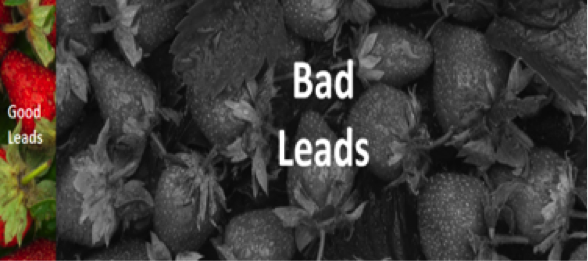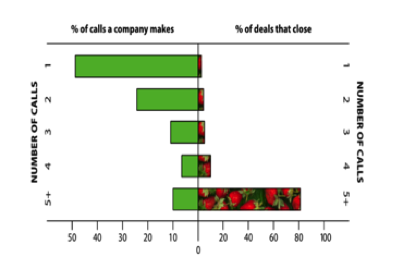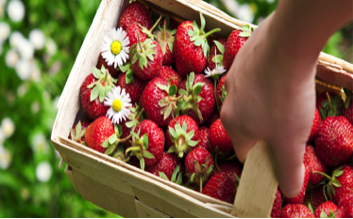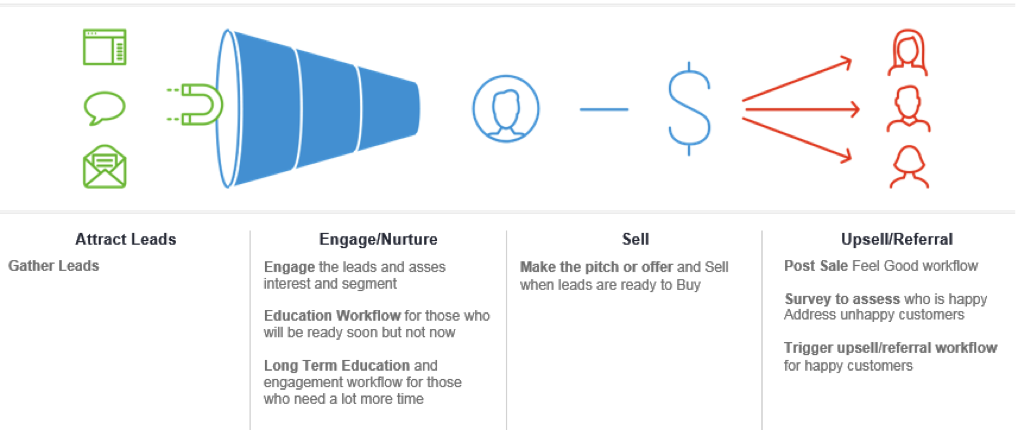by Jimmy Talbert
If you own, operate, or work for a small business you understand that converting leads into sales is among the most important activities that keeps the lights on and the door open. The sales and marketing strategy that goes into turning leads into customers can be intimidating. According to the 2019 Small Business Marketing Trends Report, “Small business marketing can be a lonely job: Nearly half (47 percent) of small business owners handle marketing efforts on their own.” So, where does the average small business start when developing and executing lead to sale conversion strategy? Below is an outline of the reasons most leads slip through the cracks, how to identify what cracks exist in your business and what you can start doing immediately to start turning more leads into sales with the help of sales automation.
Why can’t they all be good leads?
If you’ve asked yourself, “Why can’t they all be good leads?” you’re most definitely not alone. We are going to answer this age-old question by helping you think about your leads in a different way. Rather than thinking of all the leads that stopped answering the phone or those people who forgot to email after they inquired, think about it this way:
Think of your business as a strawberry field—each strawberry represents a person, a lead, or a customer.
So, if every person your business interacts with, both online and offline, is a strawberry, then all you need to do is harvest the field and you’ll have the fruit of your labor or your sales.
But after you’ve gone out and picked the fruit, your harvest actually looks like the picture below.
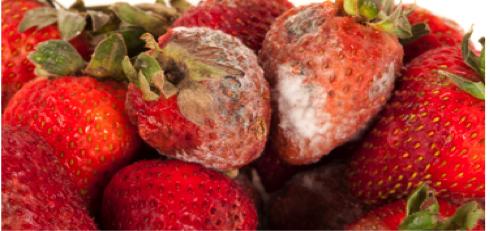
Like many misguided sales and marketing efforts, the wrong strategy will leave many of your leads rotting in the field.
The reality is you’re looking at some good leads and some bad leads, right?
The picture with the moldy strawberries illustrates the idea of good leads and bad leads. So, how many are good and how many are bad? Or how many leads turn into sales?
- Are you selling 5 percent of your leads?
- Are you selling 10 percent of your leads?
- Do you even track this conversion rate?
If you’re only converting 10 percent of your leads to sales, then you’re saying the harvest looks like the picture below.
That doesn’t look accurate though. What’s the difference between the ripe delicious fruit and the rotten berries?
Before answering that question see our chart below.
This is the NEW WAY to think about your leads (or strawberries.)
The reality with our strawberry harvest is that not all the fruit is ready to harvest on the same day. As this example relates to your business, all leads are not created equal. When most businesses get leads, they have some that are ready to buy right away. This represents the segment that most businesses actually sell. The reality is, the field of leads is full of potential sales; you have some that could be ready with a little nurture and love, some that need a longer-term nurturing and care, and some that will never be ready. This process can be done though sales and marketing automation.
Nurture and love takes time and energy
This chart represents the amount of time and energy most businesses give to most leads. Regardless of whether the sales process is short or long, the sales process happens online or offline, or you sell B2B or B2C, the concepts and statistics have been proven over time. The number of calls represents a meaningful touch to your prospect.
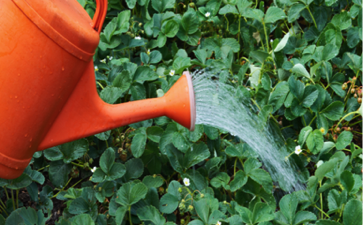
results in
So why don’t more businesses and sales people just follow up in a timely, personal way? Because they’re busy.
The “busy problem” can easily be solved with a few things: a defined sales process and sales automation software, such as a CRM like Keap, that not only supports this process but ensures a consistent customer experience. A consistent customer experience will give you the reporting to know exactly where your leads are in the buyer’s journey and where your bottlenecks are. Dialing in a sales and follow-up process will result in a harvest of fruit.
The process of leveraging “just a CRM” is a manual one, but it’s still effective. Manual in the same way that watering a garden with a garden pail will only allow a business to scale as much as the Human Capital can keep up with. They are still trading time for money because they can only sell as much as they can manually follow up with and track.
What if a business wants to really grow?
Real growth in the market today requires businesses to do more with less. If a garden needed to be watered on a much larger scale than one person with a bucket, it would be logical to install an automated irrigation system.
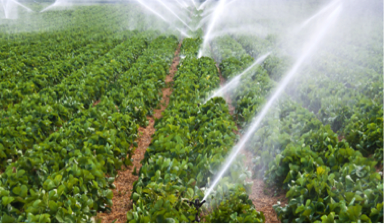
results in
Just like in gardening, a business that wants to grow needs an automated way of supporting that follow-up process. Automation in a sales and marketing process will create a repeatable standard so a business can measure success.
Automation, when used properly, should create a more personalized experience that guides the lead through the buying process and notifies the business when human interaction is needed.
Your takeaways from the strawberry analogy should be:
- Stop letting your profits rot in the field
- Invest the energy and resources to solve the problem
- Time and nurture and attention will double or triple the number of sales you get from leads
- You have only two ways to give your leads time “to ripen“ with meaningful touches:
- Manually
- Automatically
How to set up a lead conversion sales process?
Setting up a specific process for turning more leads into sales through sales automation is typically done the wrong way. Most businesses will look at a standard sales funnel, and assume it works like this:
Typical (but not ideal) sales funnel
- Generating a bunch of leads (This is the MOST expensive part)
- Sell the leads that are ready
- Sigh in relief
- Start over with generating a bunch of leads (back to the most expensive part?)
- Hopefully remember to follow up with the leads who didn’t purchase right away.
Not ideal right? This typical sales funnel creates peaks and valleys in your sales and revenue stream and puts you in a position to always chase the next sale. The typical sales funnel is also very manual and difficult to scale.
Have you ever heard the saying, “If you want something done right, do it yourself”?
Living by the do it all yourself philosophy will hinder your ability to grow. Remember and live by this saying instead, “If you want something done right, build a repeatable process.”
While creating an ideal process to convert leads to sales, we want to look beyond the sales funnel and look to your:
Ideal Customer Lifecycle
- Generate a bunch of leads
- Based on lead engagement, understanding of your offering, timeline and budget; begin to segment the leads into different follow up processes with relevant marketing content and periodic human interaction where necessary.
- Pitch/offer and sale
- Post-sale nurture
- Upsell and referral
An ideal way to start will look something like this:
The major differences from the typical to ideal is segmentation, time, and personal follow up. Most businesses DO NOT engage with prospect and customers in an ideal way because they are lacking either time or technology.
- Time: Because it would be impossible to achieve an ideal experience with every lead and a manual process.
- Technology: Keap is the only reliable system that natively has a robust CRM a powerful sales and marketing automation element and the ability to handle ALL online and offline sales. It’s the only solution flexible enough to work for businesses that sell: with sales teams, online, through affiliates, B2B or B2C. No matter what you sell or how you sell it, if your problems have been illustrated in this post they would likely be solved with a strategy similar to what’s been described and the technology to support and automate the strategy.
The disappointing reality
The disappointing reality is that few small businesses will take the time to step out of the, “day-to-day” grind long enough to define and leverage a real sales process. Most small businesses and many readers will consume this information today, think about it for an hour, and then forget about it until year-end when they discover that their desired sales numbers and goals are misaligned with their projections. These business owners and sales leaders are not lazy or bad intentioned; they’re just busy trying to do everything manually, or—in other words—they’re trying to water a field of strawberries with pail of water. They don’t have the time to investigate and install a sprinkler system that would provide the freedom and stability to thrive.


